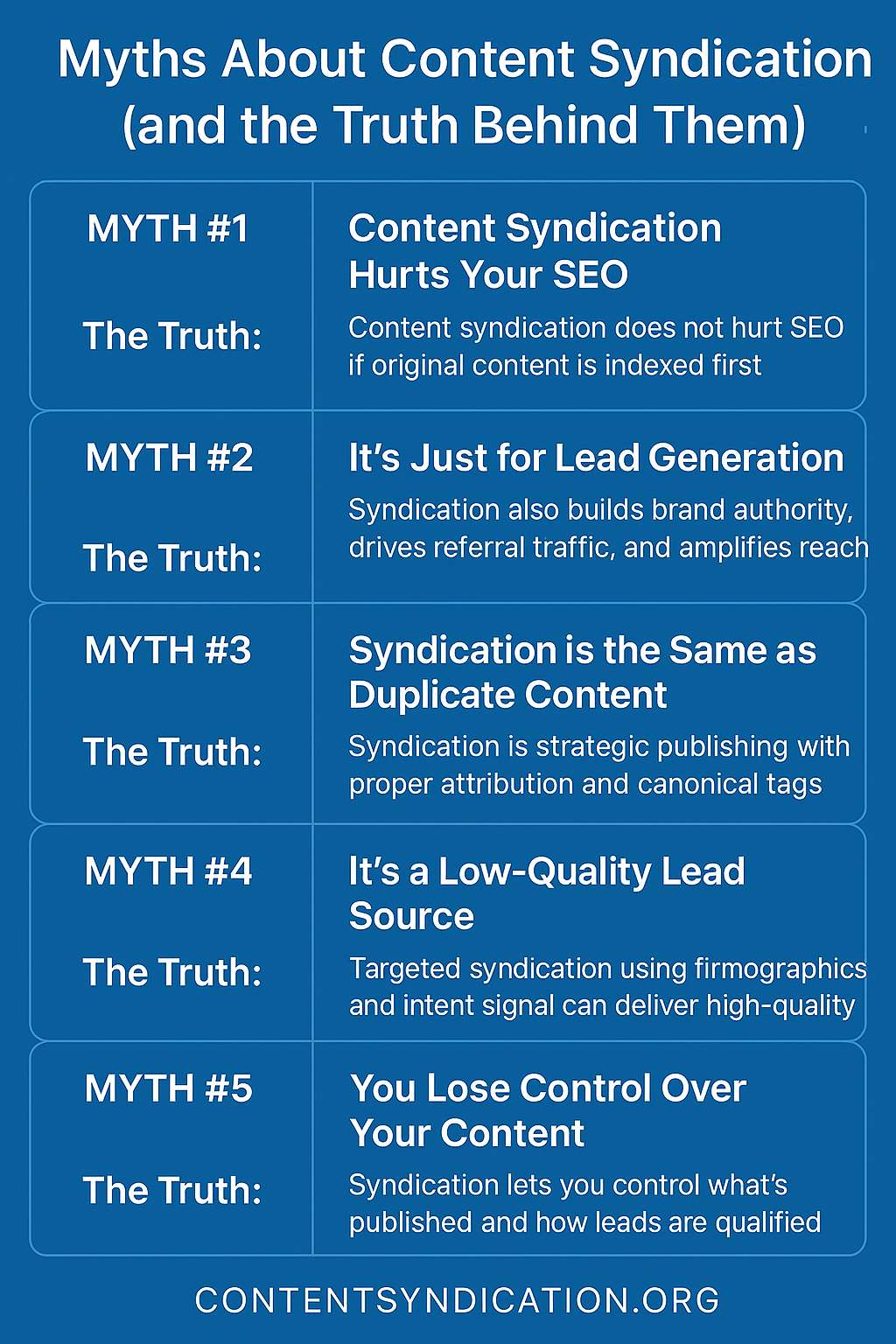Content syndication is often misunderstood—both by those new to it and even by some seasoned marketers. These misconceptions lead to hesitation, missed opportunities, and campaigns that fall flat.
In this article, we're clearing the air. No jargon. No fluff. Just straight-up truths to help you make smarter decisions about your B2B content distribution strategy.

Myth 1: Content Syndication Hurts Your SEO
The Truth:
This is one of the oldest and most widespread myths—and it’s flat-out wrong when done correctly.
Content syndication does not hurt your SEO if the original version of your content is indexed first and syndicated copies include proper canonical tags or source attribution. In fact, many top publishers—like Forbes or HubSpot—syndicate content daily.
What matters is this:
Make sure the original content lives on your site first
Add a canonical link to tell search engines where the content originated
Partner only with trustworthy platforms for republishing
This way, you get visibility and backlinks—without cannibalizing your search rankings.
Myth 2: It’s Just for Lead Generation
The Truth:
Yes, lead generation is a major benefit of content syndication. But it's not the only one.
When done right, syndication also:
Builds brand authority by putting your content in front of decision-makers
Drives referral traffic from reputable third-party sites
Amplifies reach without reinventing the wheel
It’s a content multiplier—not just a lead pipeline.
Myth 3: Syndication is the Same as Duplicate Content
The Truth:
Duplicate content is when you copy content across your own site or publish the same thing without proper structure. Syndication, on the other hand, is intentional and strategic republishing—often on third-party platforms.
Google has clarified that duplicate content penalties don’t apply to legitimate syndication if proper practices are followed.
To stay safe:
Always publish the original on your site first
Use rel=canonical or direct attribution
Don't mass-distribute to spammy sites
Myth 4: It’s a Low-Quality Lead Source
The Truth:
Like anything else in marketing, quality depends on execution.
If you're blasting the same content to a poorly defined audience, of course your leads will be weak. But targeted syndication using:
Accurate firmographics (industry, job role, company size)
Intent signals
Engaging, relevant content assets
…can deliver high-intent Marketing Qualified Leads (MQLs) that actually convert.
Myth 5: You Lose Control Over Your Content
The Truth:
With trusted vendors and platforms, you remain in control. You decide:
What gets published
Where it’s published
How leads are qualified and delivered
You can even set terms around branding, lead filters, and geographic focus.
Think of syndication as an extension of your marketing team, not a giveaway of your intellectual property.
Myth 6: It’s Only for Big Brands with Big Budgets
The Truth:
This might have been true a decade ago, but not anymore.
Today, even lean startups and mid-sized B2B companies use content syndication to punch above their weight. You can start small, optimize, and scale. There are options for every budget—from self-serve platforms to full-service campaigns.
If your goal is to reach decision-makers outside your current network, syndication is one of the most cost-effective tools available.
Final Thoughts
Don’t let outdated assumptions stop you from growing.
Content syndication, when done right, can:
Boost your visibility
Build authority
Drive leads that match your ideal customer profile
If you’ve been sitting on the fence, now is the time to give it a second look—with the facts, not the fiction.
Want to explore how content syndication could work for your brand? Drop your questions below or start a conversation with our team. Let’s grow smarter.


